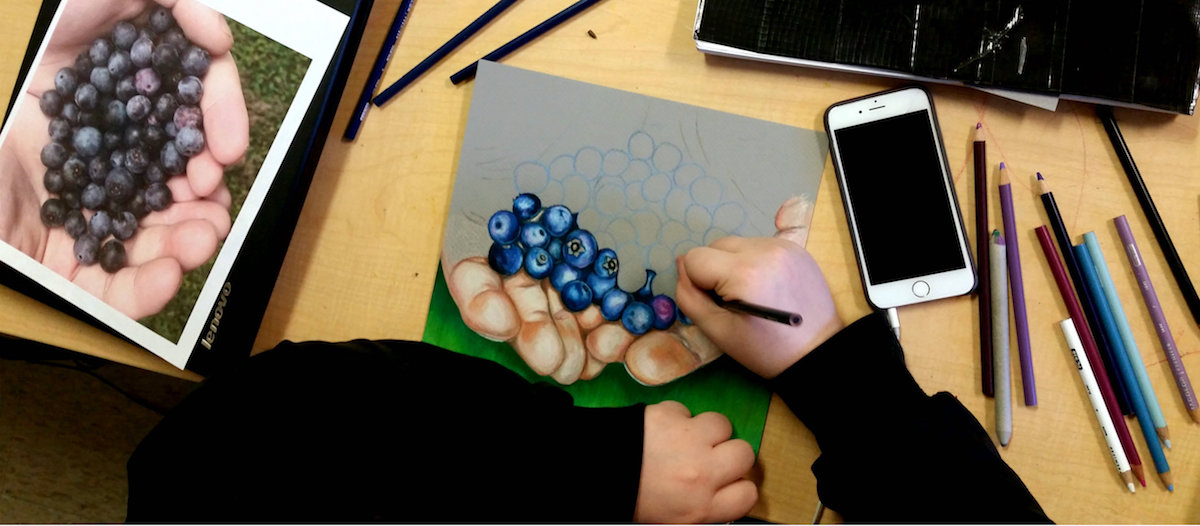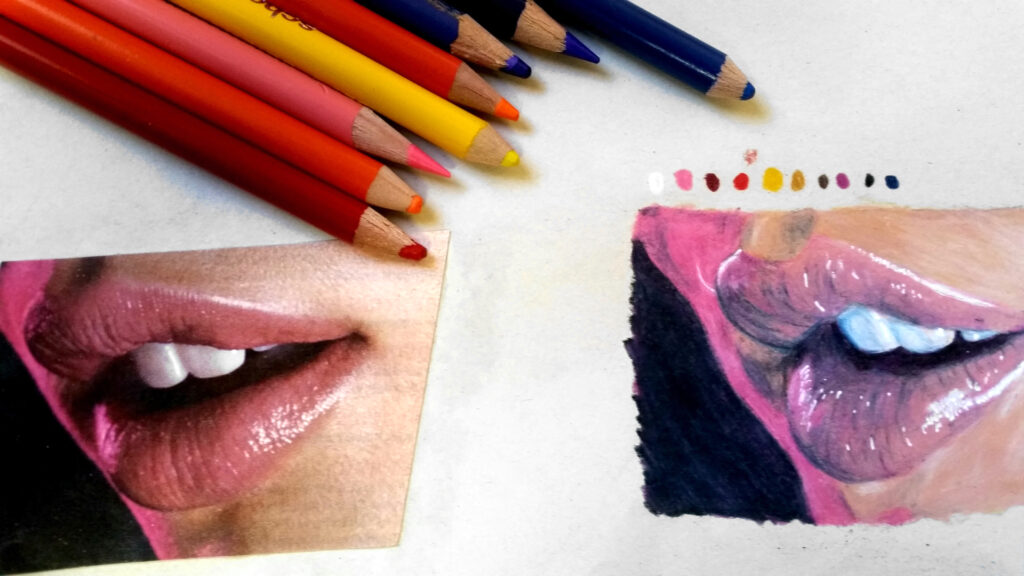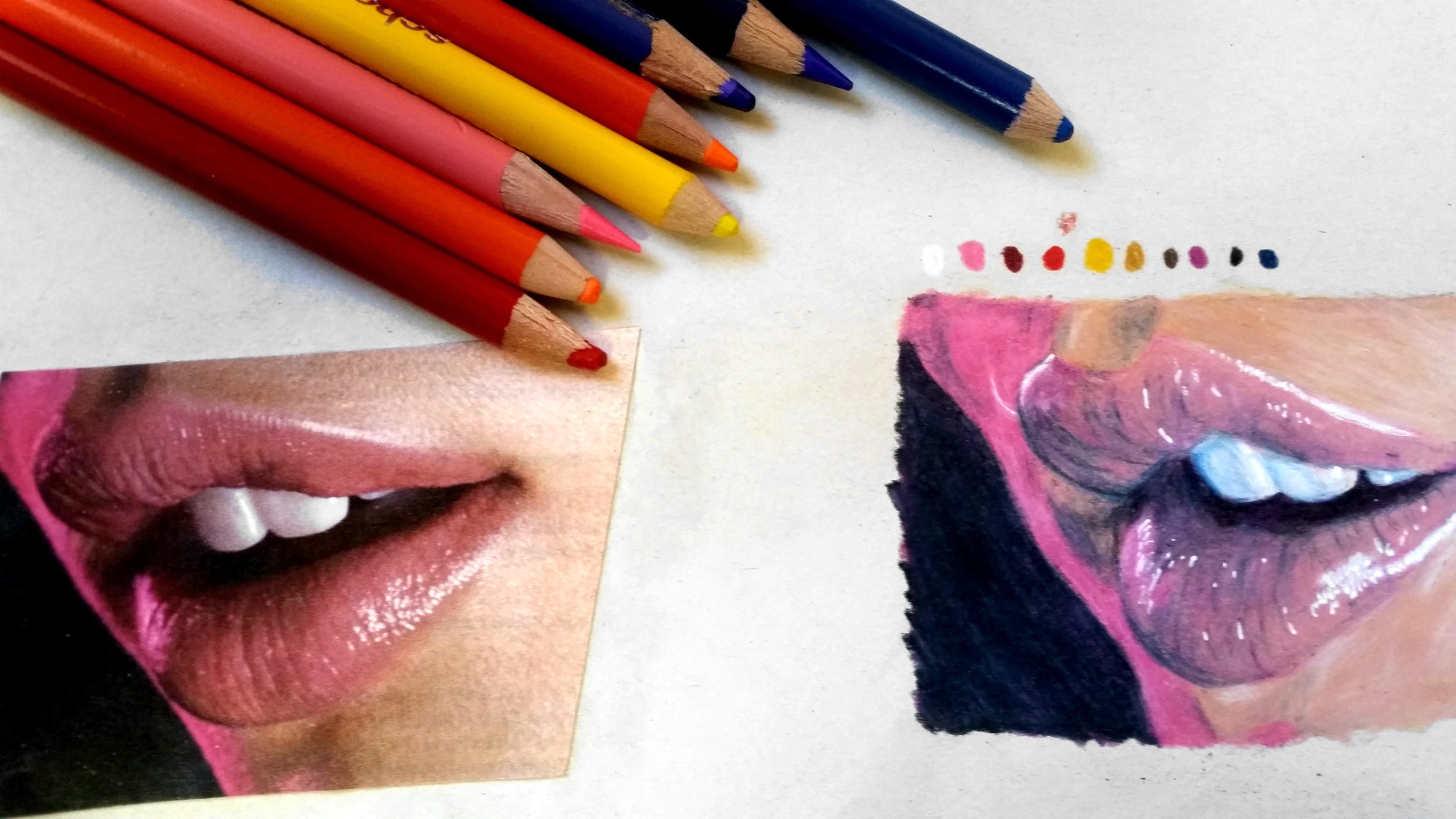I hate wasting time. When I teach a new skill or technique I want my students to learn it as quickly as possible so we can get to the good stuff – applying new learning in open-ended challenges.
Enter the boot camp.
Bootcamps are short and intense bursts of instruction and guided practice, perfect for teaching new skills and techniques. This type of teaching is great for helping students increase their familiarity and skill level with different media.
How to Run a Colored Pencil Boot Camp

1. Conduct a Pre-Assessment and Do a Demo
Time Needed: 1 Class Period
Start your colored pencil boot camp with a little test to get a good idea of your students’ skill levels. Set a timer for 15 minutes and ask them to draw whatever they’d like in colored pencil.
As they draw, observe the work. Look for how they use color. Are they layering, blending and building up to burnishing, or simply applying a light coat of color? Take note of where the class is overall and also notice students who might need extra help.
After drawing time is over, ask kids to write short responses to the following two questions:
- What colored pencil techniques do you know?
- What do you want to learn about using colored pencils?
After the pre-assessment is finished, tell kids regardless of where they currently are the boot camp goal is to “level up” – to improve on their current skill level. Ask students to try to learn more and become more skilled than they currently are instead of comparing their work to other students. This mindset is hugely important for achieving growth.
Quickly demonstrate a series of colored pencil techniques using an anchor chart for reference. (Download 7 Cool Colored Pencil Techniques here.) As you show students how to do each technique, model your thinking by talking through your decision-making process out loud.
Have students try each technique in a small area to keep this part of the unit short. A sketchbook or visual journal is the perfect place to practice. As they work, give students feedback about how they are applying what you talked about. Now is the time to correct misunderstandings, not when they’ve worked for hours on a drawing.
Bootcamps are something that choice-based teachers often use. If you’re interested in learning more about choice-based art ed, be sure to check out the AOE course on the topic. Explore the choice spectrum to give your students more autonomy without losing control!
2. Practice New Learning
Time Needed: 2 Class Periods
Now ask students to practice the techniques they’ve learned. One fun way to do this is with a “Texture Challenge.” Have everyone find three images from magazines that show texture, cut them out, and glue them to a large piece of drawing paper. Challenge them to replicate each texture as closely as they can over the course of two class periods.

3. Apply Concepts
Time Needed: 4 to 5 Class Periods
Now that students have learned a range of techniques and have had a focused time to practice them, it’s time to apply new learning in self-directed art. Ask kids to plan and create a high-quality drawing that shows what they’ve learned about working with colored pencils. To see what they really know, give them the responsibility of selecting their own subject matter and techniques.

4. Reflect
Time Needed: 1 Class Period
Have students share their work and what they’ve learned. This could be through presentations to the class or through a piece of writing like on a student blog.
Consider asking questions such as:
- What colored pencil skills or techniques did you learn during this unit? How did you apply them in your work?
- How did you plan and create your final drawing? Write about your process and your finished work. What do you like about your work? Why is it successful?
5. Demonstrate Growth
To finish the unit, ask students to do the same task they did for the pre-assessment: draw anything they’d like in colored pencil for fifteen minutes. After they finish, have students evaluate their work and celebrate their growth.
The great thing about running a boot camp is it can apply to almost any medium. The next time your students need to build skills, try out this method and see just how much your students grow!
What strategies do you have for teaching students about working with colored pencils?
Do you run Bootcamps in your classroom? Do you have any tips to share?
Magazine articles and podcasts are opinions of professional education contributors and do not necessarily represent the position of the Art of Education University (AOEU) or its academic offerings. Contributors use terms in the way they are most often talked about in the scope of their educational experiences.





